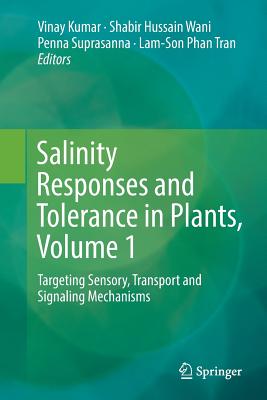商品描述
Great Salt Lake is an enormous terminal lake in the western United States. It is a highly productive ecosystem, which has global significance for millions of migrating birds who rely on this critical feeding station on their journey through the American west. For the human population in the adjacent metropolitan area, this body of water provides a significant economic resource as industries, such as brine shrimp harvesting and mineral extraction, generate jobs and income for the state of Utah. In addition, the lake provides the local population with ecosystem services, especially the creation of mountain snowpack that generates water supply, and the prevention of dust that may impair air quality. As a result of climate change and water diversions for consumptive uses, terminal lakes are shrinking worldwide, and this edited volume is written in this urgent context.
This is the first book ever centered on Great Salt Lake biology. Current and novel data presented here paint a comprehensive picture, building on our past understanding and adding complexity. Together, the authors explore this saline lake from the microbial diversity to the invertebrates and the birds who eat them, along a dynamic salinity gradient with unique geochemistry. Some unusual perspectives are included, including the impact of tar seeps on the lake biology and why Great Salt Lake may help us search for life on Mars. Also, we consider the role of human perceptions and our effect on the biology of the lake. The editors made an effort to involve a diversity of experts on the Great Salt Lake system, but also to include unheard voices such as scientists at state agencies or non-profit advocacy organizations. This book is a timely discussion of a terminal lake that is significant, unique, and threatened.
作者簡介
Bonnie K. Baxter got her bachelor's degree at Elon University and her Ph.D. at the University of North Carolina at Chapel Hill in Genetics and Molecular Biology, her graduate research centering on DNA structure and enzymology. Baxter moved to the west for a postdoctoral position at Washington State University, and she investigated the biochemistry and biophysics of chromatin structure in DNA repair. She became a professor at Westminster College in Utah in 1998, where she teaches genetics and astrobiology. Doing research with undergraduates, Baxter turned her molecular skill set towards the unexplored reservoir of microbial communities in Great Salt Lake, becoming an expert on strategies for life at high salinities. She has published studies on photoprotection, DNA repair, microbial diversity, gene expression, and astrobiology of Great Salt Lake halophiles. She directs Great Salt Lake Institute at Westminster and serves on several state committees for the Utah Department of Natural Resources, allowing her to work closely with a host of interdisciplinary researchers working on the lake.
Jaimi Butler achieved a bachelor's degree in Fisheries and Wildlife from Utah State University. While in school, her research focused on Great Salt Lake's eared grebes. Following this, Jaimi spent a number of years working for a brine shrimp harvesting company where she studied the population dynamics of Artemia. Butler continued her work on the lake with the Great Salt Lake Ecosystem Program (Utah Division of Wildlife Resources), where she monitored brine shrimp populations and helped manage the commercial harvest. With Baxter, she started Great Salt Lake Institute (GSLI) at Westminster College in 2008. GSLI is dedicated to research and education on the lake, and Butler has been engaged in both. This includes programs for K -12 teachers, community events, and citizen science projects. She also mentors research with students on Gunnison Island's breeding pelicans, tar seeps as an analogue for animal entrapment over geologic time, and many other collaborative projects with community partners.








![The Ancient Origins of Consciousness: How the Brain Created Experience /]ctodd E. Feinberg, and Jon M. Mallatt-cover](https://cf-assets2.tenlong.com.tw/ig/009/580/439/9780262534604.jpg?1732600393)





















